PERSONS MISSING THROUGH AMBIGUOUS CIRCUMSTANCES
The outside terraced restaurant at Betsy's Hotel overlooking the magnificent city of Tbilisi, was brimming full of international conference delegates. Most were smartly attired women, with a smattering of rather eccentrically dressed men. There was a lot of stylised and somewhat insincere hugging and kissing, and from the conversations we overheard, we guessed they were senior bureaucrats of some kind, probably senior health managers. All seemed to know each other and were completely absorbed with their chatter, although no-one seemed to be listening to anyone else. It was all rather bizarre and we were intrigued as to what discipline they were from.
To our surprise, we noticed that their Red Cross sponsored conference bore the curious title of "Persons Missing Through Ambiguous Circumstances". Well, we guessed, the very description of the conference would attract delegates who were most probably from the social science and psychiatric disciplines.
Breakfast at Besty's was relaxed and lovely. The food was excellent and the service exceptional. And of course the views were outstanding. We were delighted with our choice of accommodation and would highly recommend the hotel.
TOWARD THE SACRED CITY OF MTSKHETA
Vano and Keti picked us up at our hotel for our day trip to Mtskheta and our lunch with Vano and his family in a village outside Tbilisi, near the South Ossetia border. As usual, they were not staying at our hotel but at a guest house on the outskirts of the city.
Something was amiss. We drove for some distance toward Mtskheta with neither Keti nor Vano conversing with us or between themselves. Vano just stared sullenly ahead over the steering wheel; It was not at all difficult to conclude there was, or had been, some sort of problem.
At last Keti took a deep breath and explained. "We have decided that it is too dangerous for you to visit Vano's village and have lunch with his family. Vano has instead offered to prepare a picnic for us near Mtskheta. Would you like that?" she asked.
Our hearts bled for Vano. We gathered that our travel agent had decided (probably quite understandably) that they could not have us travelling so close to the still dangerous South Osettia border*. Perhaps, they may also have had a policy of not allowing drivers or guides to invite clients to their houses. We had experienced this situation when we were travelling in other countries but somehow the guides had been able to get around the problem by asking us not to mention our visits to our travel agents - and certainly not include it in my blogs! I cannot tell you how many names (Google "Most Popular Men's and Women's Names" of whatever country you require) I have invented to hide the identity of those kind relatives of the guides and drivers whose houses we visited!
But today, our visit to Vano's house was just not going to happen. We were disappointed too. We would have loved to have met Vano's wife and family. We had become increasingly fond of this quiet but thoughtful man and we guessed that retiring drivers like Vano could be easily overlooked. We also guessed from our travels, that the steady Vano had a lot more to him than what he was prepared to show and that he, like many "behind the scenes people", was containing a certain inner anger. Instead of our visit, Vano had organised for his son to deliver the food he and his wife had prepared to a petrol station on our route to Mtskheta. The adolescent boy arrived with a stack of goods; his surly behaviour was totally understandable. His mother had obviously got up at dawn to make bread, prepare fresh Khajapuri and roast home killed chickens for us. We knew they had gone to a huge effort.
We were in no position to argue. Of course, a picnic would be a perfect compromise....
* Dangers of the South Osettia border area were further confirmed following our travels:
"On July 16, 2015 Moscow backed security forces moved the administrative boundary fence dividing the Russian occupied region of South Osettia and the rest of Georgia - thereby placing more Georgian territory under Russian control. These same security forces, armed with assault rifles, were also seen crossing into Georgian-controlled territory and tearing down a Georgian flag..." Al Jazeera English, July 2015.
MYSTICAL MTSKHETA
Mtskheta, one of the oldest cities in Georgia, is located in the Kartli region just twenty kilometers north-west of Tbilisi on the confluence of the Mtvari and the Aragvi Rivers. The picturesque site houses some of the oldest and most spiritually important churches in the country. Since Christianity was established here around AD 327, Mtskheta, often referred to as "Second Jerusalem", has been regarded as the true spiritual heart of Georgia and in 2014 was declared as the Holy City of the Georgian Orthodox Church.
For centuries the city of Mtskheta has been a site of great significance to what is now present day Georgia. Favourable natural surrounds, a strategic location on the cross roads of trade routes and close relations with the Roman Empire, the Persian Empire, Syria, Palestine and the ancient Greek colony of Byzantium generated the initial development of Mtskheta, resulting in the integration of different cultural influences with local cultural traditions.
Remains of settlements at Mtskheta date back to beyond the year 1,000 BC. From the 3rd century BC to the 5th century AD, the city was the capital of the early Georgian Kingdom of Iberia (also known as Iveria). After the 6th Century AD, when the capital was moved to Tbilisi, Mtskheta continued to retain its leading role as one of the most important cultural and spiritual centres of Georgia. Today, Mtskheta is the headquarters of the Georgian Orthodox Church and houses three of Georgia's most revered churches: the Jvari Church and Monastery, the Svetitstkhoveli Cathedral and the Samtavro Monastery.
Our first port of call was the Jvari Church, fabulously located on a steep hilltop with splendid views of Mtskheta city and the two rivers. It was no accident that Keti led us to one of the churches highest points and positioned herself strategically against a stone wall while we looked over Mtskheta. For three quarters of an hour or so, Keti explained to us in exhausting detail the introduction of Christianity into Georgia and the history of the Jvari Monastery and Svetitskhoveli Cathedral, rather fantastic stories which I am certain she decided us heathens needed to be well grounded in! We were a captive audience - and we all knew it.
The Story of St Nino & The Conversion of Georgia to Christianity
"There is also in the east another Christian people, who are very warlike and valiant in battle, being strong in the body and powerful in the countless numbers of their warriors. They are much dreaded by the Saracens and have often by their invasions done great damage to the Persians, Medes and Assyrians on whose borders they dwell, being entirely surrounded by infidel nations. These men are called Georgians, because they especially revere and worship St George, whom they make their patron and standard-bearer in their fight with the infidels, and they honour him above all other saints...." Jacques de Vitry, Latin Patriach of Jerusalem 1180.
According to Georgian hagiography (the critical study of the lives of saints), St Nino is a legendary historical figure to whom the 4th century Christian conversion of (the then) Iberia or eastern Georgia is attributed. Apparently the young Nino, who was from Cappodocia in eastern Turkey, was thought to be the daughter of a Roman general and also related to St George. There appears to be many accounts of St Nino's early life but according to popular belief, she was brought up in Jerusalem (one of many Georgian connections to the former Palestine) by an uncle and provided an excellent education in Christian religion. At the tender age of fourteen, Nino experienced a vision of the Virgin Mary who told her that her destiny was to convert the Iberians to Christianity.
How she managed to travel on her own to the then Iberia in the years of the 320's is difficult to fathom. After all, surely there were inherent dangers for a fourteen year old girl to be journeying such distances by herself? Other sources, which sounded perhaps more plausible to us, argue that she was made a slave and taken to Georgia as a young girl.
Whatever the story, it is generally agreed that Nino, by her good deeds and the miracles she performed, managed to win the hearts of the Georgian peoples. Nino became known for her gift of healing and when Queen Nana of Iberia, became desperately ill, she asked Nino to pray for her. The Queen was healed and she became a Christian believer.
The King of Iberia, Mirian III, however, was unwilling to let go of his pagan beliefs. According to legend, one day while hunting he was blinded by "some sort of darkness". Helpless to find his way home, he prayed to “Nino’s God” and miraculously regained his sight. Arriving back at his house, he requested an audience with Nino who explained the Christian faith and Christian worship to him. King Mirian instantly converted to Christianity and he declared Christianity as Iberia’s state religion in 337. A pretty amazing story.
Whatever the legends and the likely fanciful embellishments, it is probable that Nino was a key figure in introducing Christian faith into a pagan and militant country. She has become one of the most venerated saints of the Georgian Orthodox Church, and her tomb lies at the Bodbe Monastery in Kakheti, a site we were to visit within the next few days of our tour.
By the time Keti had finished the story, I felt somewhat overwhelmed and again I tussled with my own religious beliefs - or lack of them. Could this fantastic story really have happened? Did these miracles really occur? Keti was an intelligent young woman and a devout believer. There was absolutely no doubt whatsoever in her mind that the story was factual. Other intelligent people are highly religious too.
Perhaps, I had missed something.....
Jvari (Monastery of the Holy Cross)
The site of the Jvari Monastery, according to traditional accounts, is where St Nino converted King Mirian III to Christianity and where a sacred holy cross was erected in the 4th century AD. A church, the "Small Church of Jvari", was later erected by Guaram, the Ruler of Kartli over the remnants of the wooden cross in circa AD 545. The current church is thought to have been constructed between AD 590 and 605 by the Guaram's son Stepanoz I. During the Middle Ages, the complex was fortified by a stone wall and gate, remnants which are still visible today. After the independence of Georgia, the church was restored and is now actively used for religious purposes.
The robust church is a classical "tetraconch" design with four apses and four niches, reminiscent of other churches found in Georgia, as well as Armenia and Caucasian Albania.
The Jvari church, which is regarded as one of the most outstanding monuments in Georgia, has maintained its significance over the years. The site is a centre of pilgrimage for Christians from all nations of the Caucasus and is regarded by many Georgians as the holiest of holy churches in the country.
The interior of the church was disappointingly bare looking with a huge wooden cross centred over the main apse. The enormous ceiling and huge stone arches of the interior however were impressive; the soft filtered light glowing in from small arched high windows giving the ancient church a certain eerie ambiance. But it was the astounding age of the monastery and the intriguing history of this site that really sent shivers up our spines.
Perhaps we were indeed, in the presence of St Nino herself?
The Svetitskhoveli Cathedral
From the Jvari Monastery, we made our way down to the city of Mtskheta to visit the Svetitskhoveli Cathedral. Also known as the "Living Pillar Cathedral", it is built on the site of the first Christian church built in the Kingdom of Iberia.
The original church was commissioned by King Mirian III soon after his conversion to Christianity and apparently built under the instructions given by St Nino who chose the site because of its inherent early Christian significance.
According to Georgian legend, in the 1st century AD a Georgian Jewish man from Mtsketa called Elias was in Jerusalem when Jesus Christ was crucified. Elias apparently bought the robe that Jesus was wearing from a Roman soldier at Golgotha (also known as Calvary which was, according to the Gospels, a site immediately outside Jerusalem's city walls where Jesus was crucified) and brought it back to his home of Mtskheta. Elias' sister Sidonia, on seeing the robe, touched it and immediately died from "the emotions engendered by the sacred object". The robe could not be prised from her grasp and it was buried with her on the site of the now Svetsitskhoveli Cathedral (one could question why this extraordinary phenomenon happened to poor Sidonia and not Elias or even the Roman soldier?).
Later, from her grave grew an enormous cedar tree which St Nino ordered to be chopped down to make the seven pillars for King Mirian's first Christian church. One of these grand pillars was to become an integral part of one of St Nino's miracles during the construction of the church.
The story of the building of the church is translated from "Lives and Legends of the Georgian Saints":
"With a single mind they set to work to build a church. The surrounding walls were quickly erected, and the time came to set up the columns. When the first and second pillars had been raised, and they proceeded to lift the third, they employed all forms of machinery and the strength of oxen and men, but when it had been elevated to a slanting angle, it proved impossible by any manner of effort to raise it the rest of the way. The redoubled and often repeated efforts of all the men failed to move it from its position, and everyone was reduced to exhaustion. The whole people was seized with astonishment, and the king's resolution began to fail him. Nobody knew what was to be done. But when at nightfall everyone went away, and both the toilers and their toil fell into repose, the captive woman (St Nino) remained alone on the spot and passed the whole night in prayer. And behold, when the king and all his people arrived full of anxiety in the morning, he saw the column, which so many machines and so many men could not shift, standing upright and freely suspended above its pedestal - not set upon it but hanging in the air about a foot above. As soon as the whole people witnessed this, they glorified God and began to declare this to a proof of the truth of the king's faith and the religion (Christianity). And behold, while they were all paralyzed with amazement, the pillar slowly descended on to its base before their eyes without anyone touching it, and settled in perfect balance. After this the rest of the columns were erected with such ease that the remainder were all set in place that same day.....".
The present cross dome Svetstitskhoveli Cathedral was built in the 11th century (from 1010 to 1029) by the Georgian architect Arsukisdze. It was surrounded by a defensive wall during the reign of King Ereckle II in 1787 (Ereckle was a Georgian monarch of the Bagrationi dynasty, reigning as the king of Kakheti from 1744 to 1762, and of Kartli and Kakheti from 1762 until 1798). Interestingly the top storey of the cathedral was designed for defence purposes with emplacements for guns and other military armaments. It is the second largest church building in the country and is listed as an UNESCO World Heritage Site together with the Jvari Monastery and other historical monuments of Mtskheta.
The interior of the cathedral is adorned with frescoes which have sadly not survived their original condition. It really makes you question the stupidity of human decision making when you hear continual stories throughout the history of so many iconic structures being tragically defaced and/or destroyed. In the 1830's when Tsar Nicholas I was scheduled to visit Mstkheta, the frescoes were all whitewashed, destroying much of the intricate ancient artwork. The even greater tragedy was that it was all in vain as the Tsar's visit did not ever eventuate.Today, after much careful restoration, only very few remnants of the original frescoes survive.
The stately old Cathedral oozes with its rich history. On the right hand side of the Cathedral entrance is a small baptismal stone dating back to the 4th century and thought to be used for the baptism of King Mirian and Queen Nana. Svetitskhoveli was not only the site of the coronation of the Georgian kings but also served as their burial place. Ten are known to have been buried here, although only six tombs have been found, all before the altar.
On the the south side of the building is a small stone church built into the Cathedral, a symbolic copy of the Church of the Holy Sepulchre in Jerusalem. It was built in the 13th and 14th centuries to signify Svetitskhoveli as the second most sacred place in the world.
The Cathedral was really rather lovely with its interior walls decorated with numerous beautiful frescoes and Christian orthodox icons, most of which however, are not original. The exterior of the gracious old building exudes a real feeling of presense with its intricately carved exterior stone walls and lovely garden setting.
I couldn't help but take some photos of the lovely golden roses and wondered why the usually unstoppable and enthusiastic flower lover Keti did not join me in exploring the gardens - until Alan pointed out the rather imposing "DO NOT WALK ON THE LAWNS" signage. Oh dear...
"THAT IS THE PROBLEM WITH SCIENCE, IT DESTROYS RELIGION"
I must admit, that after our morning's intense religious educational experience and sightseeing, we were rather "churched out" - and Vano's picnic was sounding good.
On our way back to Tbilisi, we talked about religion in general. Keti was refreshingly open about her religious beliefs and happily told us about the significant role the church played in both her and her family's life, and of her very favourite church in Tbilisi where she and her mother prayed every Saturday morning. It was an interesting discussion and Keti was totally engaging and absolutely honest about her devotion.
When she finally asked us why we questioned religion, I answered as diplomatically as I could that our scepticsm was most probably because of our scientific discipline backgrounds. Keti didn't hesitate to respond. "Ahh," she said sadly "that is the problem with science, it destroys religion."
We were flabbergasted. There was no suitable answer....
VANO'S PERFECT PICNIC
Not far from Mtskheta, Vano pulled our car over into a clearing in a lightly forested park. Keti carefully explained there was a lot of food and also, plenty of Vano's homemade wine which was apparently pretty potent. "Is this OK with you?" she asked cautiously. Of course it was. By then it was sounding frigg'n marvellous!
Vano carefully uncovered huge rounds of homemade flat breads, fresh Khajapura and some barbequed butterflied chickens - and numerous bottles of his wine and cans of Georgian local beer. Vano was a great host and it was impossible to be either without a drink or a large slab of bread and chicken. It was a great feast. The wine was most unusual, being a faint pink colour due to the fermentation of white grapes skis with the brew. And it certainly kicked a mighty big punch!
During our picnic, two young people waved to Keti. They were on their way to a small church some five kilometers up the track from where we were enjoying our picnic. Giorgi, a friend of Keti's with whom she had studied at university, explained he was about to embark on a Masters Degree which he would be undertaking in Melbourne, Australia later that year. We invited him to contact us when he was in Australia and that he was of course welcome to our home. Giorgi was a charming young man and we exchanged cards and contact details. Keti was more interested in doing the walk up to the church but for some strange reason we firmly declined...
TOO MUCH MILITARY!
Our afternoon was free for us to explore Tbilisi, and after the wine wore off (and that did take some time), we decided to wander down to the city centre to buy Keti and Vano some farewell gifts. We only had day or so left on our tour before we journeyed on to Azerbaijan, and it was not always easy to get away to do some discrete shopping - or any shopping for that matter. We often lamented that even though we always make it quite clear when we travel in foreign places that we would like some time to do some supermarket shopping, it almost never eventuates. Perhaps our travel agents don't believe that we love supermarkets and find it one of the more interesting means to study how people eat and live?
Several loud explosions, followed by a series of jet fighters screaming low through Tbilisi city, rocked our hotel. The windows shook as several more explosions boomed. Instinctively I ran out on to our balcony to see what was happening but Alan grabbed my arm, saying it could be dangerous. From our room, we could see more jet fighters in formation spewing tails of multi-coloured emissions, followed by several extremely low flying helicopters carrying Georgian flags.
It was not a Russian bombing mission but was in fact celebratory fly pasts and fireworks for Georgia Independence Day! We were later to find out from Keti that Georgia Day is an annual public holiday which commemorates the 26 May 1918 adoption of the Act of Independence, which established the Democratic Republic of Georgia following the 1917 Russian Revolution. Hmm, if only we had known!
Our exploration of downtown Tbilisi was fun. Somehow, it makes a trip shopping more interesting if you have a mission. We bought Vano some liqueur filled chocolates and Keti some chocolates in an attractive floral box. Mission accomplished, we stocked up on our beer and snack food supplies and made our way back up the steep incline to Betsy's.
In the early evening during a wonderful golden sunset over Tbilisi, we thoroughly enjoyed another fabulous meal at Besty's restaurant. Alan, who does not normally eat dessert ordered a most fantastic orange and chocolate fudge, liqueur soaked dessert cake which he generously shared with me. It was sensational - and a lovely finale to a great stay at Betsy's boutique hotel.
In the Presense of St Nino & Vano's Perfect Picnic
Tuesday, May 26, 2015
 Tbilisi, Georgia
Tbilisi, Georgia
Other Entries
-
8Aboard the Sapsan: From Moscow to St Petersburg
May 1313 days prior St. Petersburg, Russian Federationphoto_camera18videocam 0comment 0
St. Petersburg, Russian Federationphoto_camera18videocam 0comment 0 -
9A Walk With Nadya: Absorbing St Petersburg
May 1412 days prior St Petersburg, Russian Federationphoto_camera34videocam 0comment 1
St Petersburg, Russian Federationphoto_camera34videocam 0comment 1 -
10State Hermitage Museum & Adventures in St Petes
May 1511 days prior St. Petersburg, Russian Federationphoto_camera22videocam 0comment 1
St. Petersburg, Russian Federationphoto_camera22videocam 0comment 1 -
11Once We Had No Armenian Visas - Now We Have Four..
May 1610 days prior Yerevan, Armeniaphoto_camera5videocam 0comment 0
Yerevan, Armeniaphoto_camera5videocam 0comment 0 -
12The Caucausus - An Uncomfortable Dinner Party
May 179 days prior Yerevan, Armeniaphoto_camera4videocam 0comment 2
Yerevan, Armeniaphoto_camera4videocam 0comment 2 -
13The Caucasus - A Historic Timelime Summary
May 179 days prior Yerevan, Armeniaphoto_camera8videocam 0comment 0
Yerevan, Armeniaphoto_camera8videocam 0comment 0 -
14Armenia: Proud People of a Lost Land
May 179 days prior Yerevan, Armeniaphoto_camera25videocam 0comment 0
Yerevan, Armeniaphoto_camera25videocam 0comment 0 -
15Under the Gaze of Noah
May 188 days prior Yerevan, Armeniaphoto_camera36videocam 0comment 2
Yerevan, Armeniaphoto_camera36videocam 0comment 2 -
16Lake Sevan - The Tranquility and The Terror
May 197 days prior Gyumri, Armeniaphoto_camera36videocam 0comment 0
Gyumri, Armeniaphoto_camera36videocam 0comment 0 -
17Gyumri: God Will Heal Your Wounded Soil
May 206 days prior Bavra, Armeniaphoto_camera18videocam 0comment 0
Bavra, Armeniaphoto_camera18videocam 0comment 0 -
18Keti, Vano & Welcome to Georgian Hospitality....
May 206 days prior Akhaltsikhe, Georgiaphoto_camera19videocam 0comment 0
Akhaltsikhe, Georgiaphoto_camera19videocam 0comment 0 -
19To Borjomi - Playground of the Tsars
May 215 days prior Batumi, Georgiaphoto_camera25videocam 0comment 1
Batumi, Georgiaphoto_camera25videocam 0comment 1 -
20Batumi to Zugdidi - Mestia: Guests of the Dadianis
May 224 days prior Mestia, Georgiaphoto_camera27videocam 0comment 3
Mestia, Georgiaphoto_camera27videocam 0comment 3 -
21Silent Witnesses of a Strange Place
May 224 days prior Ushguli, Georgiaphoto_camera46videocam 0comment 0
Ushguli, Georgiaphoto_camera46videocam 0comment 0 -
22Kutaisi: "This is My Abode Forever and Ever..."
May 242 days prior Kutaisi, Georgiaphoto_camera26videocam 0comment 0
Kutaisi, Georgiaphoto_camera26videocam 0comment 0 -
23To Gori: Birth Place of Joseph Stalin
May 251 day prior Gori, Georgiaphoto_camera25videocam 0comment 0
Gori, Georgiaphoto_camera25videocam 0comment 0 -
24Gori to Tbilisi: Travelling Through Troubled Lands
May 251 day prior Tblisi, Georgiaphoto_camera27videocam 0comment 0
Tblisi, Georgiaphoto_camera27videocam 0comment 0 -
25In the Presense of St Nino & Vano's Perfect Picnic
May 26 Tbilisi, Georgiaphoto_camera19videocam 0comment 0
Tbilisi, Georgiaphoto_camera19videocam 0comment 0 -
26In Fields of Gold: Davit Gareja Monastery Complex
May 271 day later Davit Gareja, Georgiaphoto_camera21videocam 0comment 0
Davit Gareja, Georgiaphoto_camera21videocam 0comment 0 -
27Bodbe Monastry: Resting Place of St Nino
May 282 days later Sighnaghi, Georgiaphoto_camera18videocam 0comment 0
Sighnaghi, Georgiaphoto_camera18videocam 0comment 0 -
28From Georgia Into Azerbaijan - "Good Luck"!
May 282 days later Sheki, Azerbaijanphoto_camera26videocam 0comment 0
Sheki, Azerbaijanphoto_camera26videocam 0comment 0 -
29Azerbaijan - A Very Well Kept Secret....
May 282 days later Sheki, Azerbaijanphoto_camera24videocam 0comment 4
Sheki, Azerbaijanphoto_camera24videocam 0comment 4 -
30Along the Dagestan Border to Ancient Lahij Village
May 293 days later Lahıj, Azerbaijanphoto_camera49videocam 0comment 0
Lahıj, Azerbaijanphoto_camera49videocam 0comment 0 -
31Baku - One of the Beautiful Cities of the World
May 304 days later Baku, Azerbaijanphoto_camera60videocam 0comment 0
Baku, Azerbaijanphoto_camera60videocam 0comment 0 -
32Flight Chaos OR a Saviour Called Mikhail
May 304 days later Baku, Azerbaijanphoto_camera7videocam 0comment 1
Baku, Azerbaijanphoto_camera7videocam 0comment 1 -
33Three Russian Miners AND The Bride of Frankenstein
May 315 days later Shanghai, Chinaphoto_camera6videocam 0comment 0
Shanghai, Chinaphoto_camera6videocam 0comment 0 -
34Shanghai OR How To Stuff a Dooner Into a Suit Case
May 315 days later Shanghai, Chinaphoto_camera5videocam 0comment 0
Shanghai, Chinaphoto_camera5videocam 0comment 0 -
35"Madam, This Queue is for Business Class Only...."
Jun 016 days later Shanghai, Chinaphoto_camera7videocam 0comment 0
Shanghai, Chinaphoto_camera7videocam 0comment 0 -
36Reflections & Those Who Made Our Trip So Speci
Jun 038 days later Sydney, Australiaphoto_camera12videocam 0comment 0
Sydney, Australiaphoto_camera12videocam 0comment 0

 Tbilisi, Georgia
Tbilisi, Georgia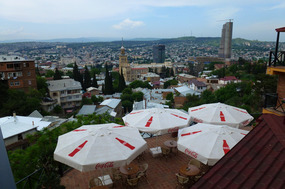
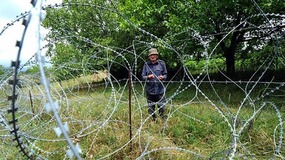
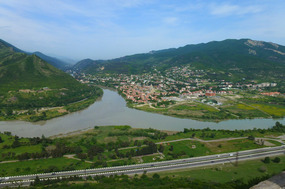
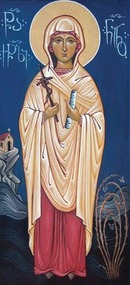
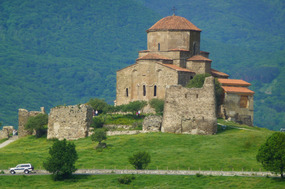
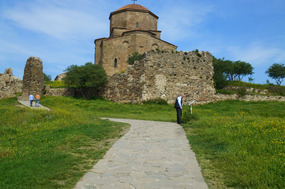
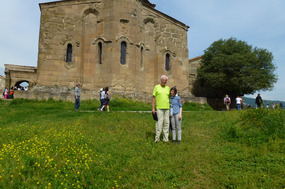
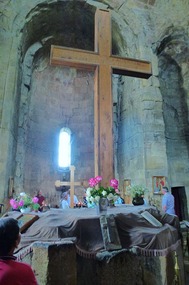

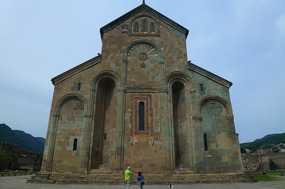

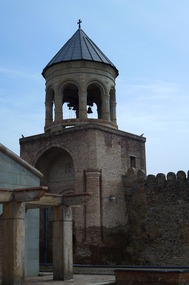
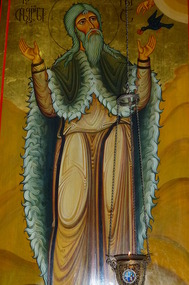
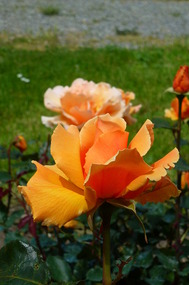
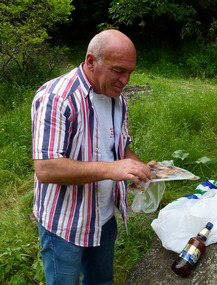
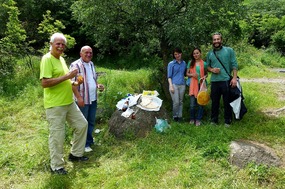

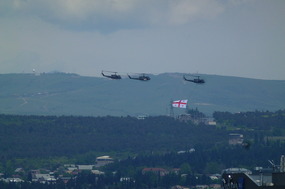
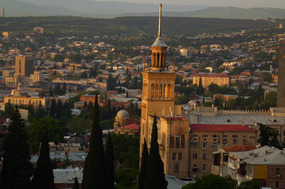






2025-05-22